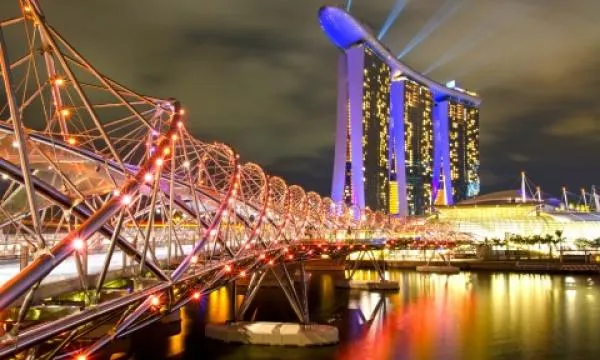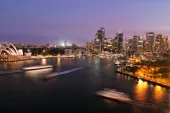
MICE activities to kickstart Singapore hotels' recovery
But the outlook for the hotel industry in Singapore in the immediate term remains cloudy.
For four consecutive years to 2019, Singapore experienced growth in both visitor arrivals and tourism receipts despite global headwinds. Tourism arrivals in Singapore increased by 3.3% to 19.1m in 2019 following relatively strong performance in 2018.
Colliers notes this is robust performance after the stagnant figures in 2015 and strong growth in 2016, and is mostly underpinned by an increase in visitation from North and South Asia, and in particular China, Indonesia and India. Tourist arrivals from India have seen the highest spike of 13% with cruise arrivals going up by 27%. This growth represents a compound annual growth rate (CAGR) of 6.1% between 2010 and 2019.
According to Colliers, for 2020, the total number of international visitor arrivals to Singapore has declined by 85.7% to 2.7m, due to unprecedented global travel restrictions and border closures amid COVID-19. While the situation seems to be abating and governments across the world are starting to ease travel restrictions, the outlook for inbound tourism arrivals to Singapore in the immediate term remains uncertain, as much will depend on the economic outlook globally and regionally, how long COVID-19 persists across the world, and how long travel restrictions remain in place with reciprocal opening being key. At present, there is still no cohesion amongst governments in responding to COVID-19, with countries being affected differently and at varying times.
"As such, we expect any recovery to be uneven, possibly following a swoosh, with a tentative return to business travel in late Q3 or Q4 2021."
Here's more from Colliers:
In line with the trend of international visitor arrivals, Singapore’s tourism receipts grew at a 10-year CAGR of circa 8.2% from S$12.6 billion in 2009 to S$27.7 billion in 2019. Driving this growth was increased visitor arrivals from high-spending markets such as China, South Korea, the United States and the United Kingdom.
In the first three quarters of 2020, in line with tourism arrivals, tourism receipts fell 78.4% to S$4.4 billion considering the fallout from COVID-19. However, we expect a recovery as the government has recently been actively promoting and launching various tourism initiatives that should drive visitation in 2021. Initiatives include the business travel lane, which allows corporate and diplomatic travelers skip quarantine on arrival, and the launch of the “Air Travel Pass Program,” which allows leisure tourists to apply for travel to Singapore without undergoing the 14-day quarantine period.
In addition, the World Economic Forum has also recently announced that it will be hosting its annual meeting in Singapore in August 2021. If the event takes place successfully, it will boost Singapore's MICE and hospitality sector as it will prove that the city can host large global events despite COVID-19.
Hotel supply to remain muted in the short term
Including the two white sites at Marina View and River Valley available on the government land sales reserve list, which can together potentially accommodate circa 1,070 rooms in our estimation, we expect another circa 4,765 rooms to be added between 2021 and 2025. Significant new hotels scheduled to open between 2021 and 2023 include the Pullman Singapore (342 rooms), Banyan Tree Mandai (338 rooms), Mondrian Singapore (300 rooms), Artyzen Cuscaden (142 rooms) and Club Street (800 rooms). In addition, in circa 2025 we expect Marina Bay Sands (MBS) and Resorts World Sentosa (RWS) to add 2,100 rooms as part of their integrated resort (IR) expansion plans. It is therefore likely that demand will continue to grow as the IRs expand their offerings.
In terms of hotel performance, room occupancy remains well in excess of 83% between 2011 and 2019, despite the new supply. Despite the sustained global economic headwinds, hotel room occupancy and ADR had held up at 86.9% and S$210.5 in 2019, an increase of 0.8 pp and 1.1% y-o-y, respectively, as the hotels sought to maximize their yield strategy through higher room rates. Correspondingly, RevPAR rose by 2.0% y-o-y to S$182.9. Contributing factors for the stronger hotel performance included the increases in visitor arrivals and visitor days boosted by the F1 race; new attractions such as Jewel Changi Airport; as well as the regional boost arising from some redirection of tourists into Singapore as political unrest deterred visitors to Hong Kong.
For 2020, the performance of the hotel industry in Singapore was affected by the effects of COVID-19. This is evident in the hotel performance during the first eleven months of 2020, which saw room occupancy and ADR fall by 30.8 pp and 39.5% y-o-y, respectively, during the period. As highlighted earlier, the situation seems to be abating. However, 2020 performance is not representative of true occupancy given the use of hotels for quarantine at prescribed rates set by the government and the partial or full closure of some hotels, which has meant that the operating performance statistics can be misleading when compared to previous years.
Looking ahead into 2021, the outlook for the hotel industry in Singapore in the immediate term remains cloudy as much will depend on the economic outlook globally and regionally, how long COVID-19 persists across the world, and how long travel restrictions remain in place, with reciprocal openings key to a sustainable upward trajectory.
Notwithstanding, hotel performance in Singapore is expected to remain cautiously optimistic in the medium to long term, with much depending on external factors given Singapore’s high exposure to global events (such as uncertain global economic uncertainties, forex movements and geo-political events). Therefore, assuming healthy demand post-COVID-19, alongside a moderate level of new hotel room supply and barring any external shocks, hotel room occupancy in the medium to long term is expected to grow marginally as the number of international visitor arrivals continue to grow on a positive trajectory considering:
- Singapore’s continued position as a key business and financial hub, which will drive inbound corporate travel.
- Singapore’s growing status as a leading MICE destination with more prominent events included.
- Continued enhancement to the leisure and entertainment offerings and investment in tourism infrastructure.
In our view, Singapore will continue to remain a global hub, largely drawing on its largest source markets across the Asia Pacific region. The planned new attractions and infrastructure projects scheduled between 2021 and 2030 bode well for future visitation and combined with the relatively low level of new room supply, this should continue to underpin hotel fundamentals over the medium term. In addition, the Singapore government constantly monitors land use to ensure there is minimal demand/supply imbalance.
Therefore, given this background and recent and anticipated trends, we expect overnight stays to gradually rebound and outstrip hotel room stock post-COVID-19 as in previous years. This bodes well for any planned new hotel supply over this period.
Final thoughts – capital values
The hospitality industry in Singapore saw record investment sales in 2019, contributed in part by the mergers of the REITs. However, following the fallout effects of COVID-19, transactions in 2020 have been at its lowest levels, with volumes witnessing a drop by 32.6% y-o-y.
Looking ahead, investment interest in hospitality assets is expected to remain, underpinned by sound hotel fundamentals as highlighted earlier. As such, we expect owners, investors and hotel operators to continue to seek out strategic hotel sites. This is in addition to the largest average decline in development charge (DC) rates for hotels by 7.8%, given the fall in global travel and revenues. Capital values for Singapore hotels remain firm.



















 Advertise
Advertise




